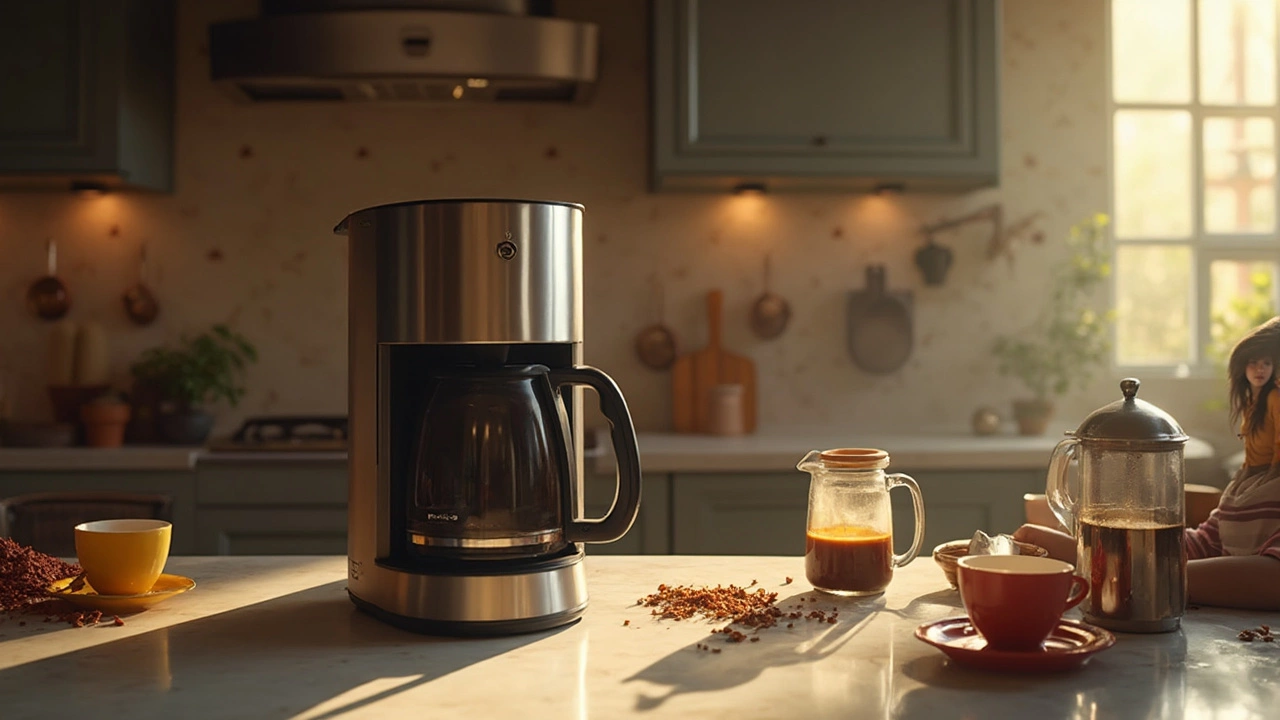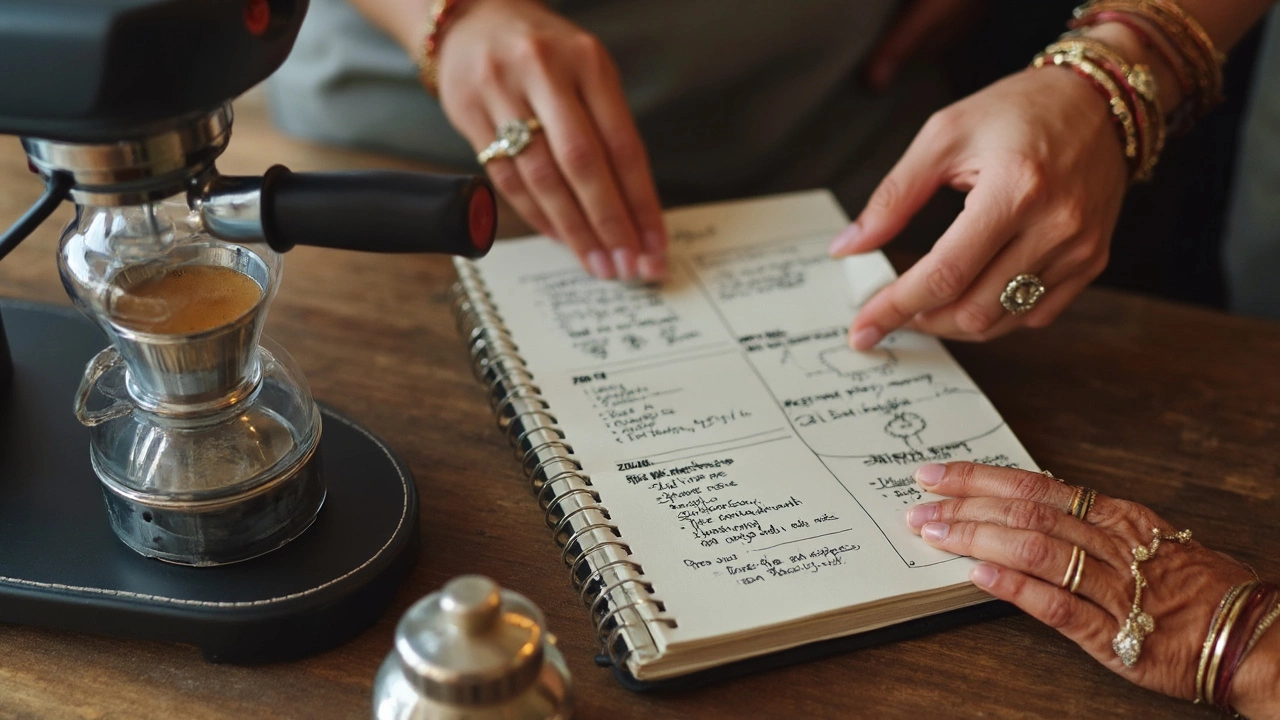
Most people call drip coffee makers boring, but there’s no denying they keep showing up in kitchens, offices, and just about anywhere people want a quick, reliable cup. Before you brush them off as ‘basic,’ it’s worth understanding what makes drip machines tick and why coffee drinkers of all kinds keep coming back to them.
The real question isn’t whether drip coffee makers are trendy. The real question is: are they actually better for your needs? With all the coffee gadgets out there—from pod machines to pour-overs and espresso makers—it’s easy to get lost in the options or get sucked in by flashy deals that promise the “best cup ever.” But sometimes the simplest solution wins.
Let’s get under the hood of the humble drip coffee maker, weigh the pros and cons, and figure out if it outshines the rest. Want to save time, money, or just your sanity in the early mornings? You might be surprised by what a drip machine can actually deliver when used right.
- What Makes a Drip Coffee Maker Tick?
- Pros That Win Over Most Coffee Lovers
- Honest Cons of Drip Machines
- How Drip Stacks Up Against Other Coffee Gear
- Tips for Nabbing the Best Coffee Maker Deal
What Makes a Drip Coffee Maker Tick?
Let’s cut through the mystery: a drip coffee maker isn’t about bells and whistles, it’s about steady, tried-and-true brewing. Here’s how it goes behind the scenes. You fill the tank with cold water, toss in a filter with ground coffee, hit the button, and let the machine do its thing. The machine heats water up to around 195–205°F (yup, that’s the sweet spot for extracting flavor). The hot water then makes its way through the grounds in the filter, usually dropping steady little streams across the surface so the grounds soak evenly. Gravity pulls the fresh brew down into the waiting pot below.
What’s clever here is how simple each part is, but also how much control you still have if you want. Most modern machines have timers, brew strength settings, or even small batch modes. Some even use “showerhead” style water sprayers so the grounds get evenly saturated—this actually makes a noticeable difference in taste.
Here’s what happens inside, step by step:
- Water gets pulled from the reservoir into a heating chamber.
- Heated water is pushed up a tube to the top of the filter basket.
- Hot water drips across the coffee grounds, soaking them evenly.
- Coffee slowly drips into the carafe, ready to pour.
If you ever wonder why your machine tastes better some mornings, it could be little things—like the kind of filter you’re using, the freshness of your coffee, or even the way the water flows. All of this means a drip coffee maker isn’t just an old-school kitchen appliance; it’s basically a foolproof brew assistant.
Check out how drip machines stack up against a few other options on basic specs:
| Brewer Type | Brewing Time (min) | Cost ($) | Max Cups Per Cycle |
|---|---|---|---|
| Drip Coffee Maker | 5-10 | 30–200 | 4–12+ |
| Single-Serve Pod Machine | 2-3 | 60–200 | 1 |
| Manual Pour-Over | 4–5 | 15–70 | 1–2 |
| Espresso Machine | 2–4 | 100–1500+ | 1–2 |
You get more volume per cycle with a drip machine, and it’s usually less of a hassle to clean. Coffee nerds might chase the perfect gadget, but for most folks (like me, making a pot for family breakfast), drip just makes sense.
Pros That Win Over Most Coffee Lovers
There’s a reason the drip coffee maker fills more mugs than almost any other brewer in the world. The best part? You don’t need barista skills or fancy gear. Here’s what keeps people coming back for more.
- Consistency Every Morning: Whether you use premium beans from that local roaster or just whatever was on sale, drip machines give you a reliable cup every single time. Once you learn your machine’s quirks, it rarely surprises you (in a bad way, anyway).
- Speed and Volume: Need coffee for the whole family (or just a cranky you who wants refills)? These machines crank out pot after pot, handling anywhere from 4 to 14 cups without fuss. Busy mornings, brunches, meetings—the drip coffee maker has your back.
- Hands-Off Brewing: Press a button, go wrangle the kids, and return to a full carafe. Some machines are programmable, so you wake up to the aroma without lifting a finger. Nothing beats stumbling into the kitchen to a ready pot before the school chaos starts.
- Value for Money: The average drip machine lasts years, costs less than that espresso monster, and has cheaper replacement parts. Even top-rated models like the Technivorm Moccamaster or Breville Precision Brewer go on sale several times a year.
- Easy Cleanup: Most machines have straightforward parts—filter basket, carafe, and sometimes a water reservoir. No tiny crevices, no stuck grounds to pick at. Dishwasher-safe pieces save extra time.
Packed schedules and early alarms make many folks default to drip. Here’s how the numbers stack up when you compare costs, speed, and capacity:
| Feature | Drip Coffee Maker | Single-Serve Pod Machine | Manual Pour-Over |
|---|---|---|---|
| Average Brew Time (minutes) | 5-8 | 1-3 | 5-7 |
| Brews Per Batch | 4-14 cups | 1 cup | 1-2 cups |
| Avg. Cost Per Cup ($, using grocery beans/pods) | 0.15 | 0.60 | 0.15 |
| Cleanup Time (minutes) | 1-2 | 0.5-1 | 2-4 |
While you do sacrifice that made-by-hand ritual with a drip machine, you get a seriously good blend of convenience, savings, and volume. For families, busy mornings, or anyone sick of standing at the counter, these perks make drip coffee makers hard to beat.

Honest Cons of Drip Machines
Let’s cut to the chase—drip coffee maker fans might love the convenience, but there are some real drawbacks that people usually find out only after a few groggy mornings. Drip machines are practical, but they aren’t the answer for everyone. Here’s what you need to know before handing over your cash.
First up, drip brewers don’t exactly specialize in flavor. The hot plate on most models keeps coffee warm, but it also keeps brewing it—meaning your cup can taste burnt or stale pretty fast. If you’ve ever wondered why office coffee sometimes tastes like scorched socks, now you know. Even new, pricier machines can have this problem unless they use a thermal carafe.
Another honest con is lack of control. Drip coffee makers automate everything. You can pick your beans, grind size, and water, but you can’t fine-tune brewing time or water temperature on most mid-range models. That’s a bummer if you want to play barista at home or if you’re picky about your coffee’s taste profile.
Cleaning can get annoying too. Mineral build-up from water can sneak into the inner tubing and showerhead, which messes with taste and even shortens the life of your machine unless you stick to a cleaning routine.
Let’s break down some of these points with actual data so you can compare for yourself:
| Issue | Drip Machines | Manual Pour Over | Espresso Machines |
|---|---|---|---|
| Flavor Control | Low | High | High |
| Heat Retention | Can scorch | Fresh per cup | Fast output |
| Cleaning Needed | Monthly (descaling) | Light after use | Frequent, deep |
| Average Brew Time | 5-8 mins | 3-4 mins | ~1 min |
Not all drip makers are equal, but even top ones don’t solve the core issues: taste drops off if left sitting, you don’t get much control, and you’ll need to keep up with cleaning. If those are dealbreakers for you, it might be worth looking into other brewing gear instead.
How Drip Stacks Up Against Other Coffee Gear
When you compare drip coffee makers with all the other crazy options out there—think single-serve pod machines, French press devices, pour-over cones, or old-school stovetop Moka pots—each one lands a little differently on the convenience, taste, and cost spectrum. Nobody wants to buy a machine and find out it’s a pain to use or doesn’t make coffee the way they like.
Let’s break it down in the ways that actually matter:
- Drip coffee maker: These do best when you want to brew several cups at once with almost zero fuss. They’re super straightforward—just fill with water, dump some ground coffee in the basket, and hit a button. Most models brew in 5-10 minutes.
- Pod machines (like Keurig or Nespresso): Fast and mess-free, but you’re locked into buying pods, which cost more per cup and pile up waste. On average, you’ll pay 3-4x more for pods versus ground coffee.
- French press: Gives you a bold cup and more control, but you’ll have to mess with steeping times and cleanup can be annoying (those grounds stick to everything!). It works best if you only need a couple of cups at once.
- Pour-over: Awesome flavor, but you’ll have to stand there slowly pouring hot water—not great if you’re in a hurry or need to make coffee for a crowd.
- Espresso machine: Next-level café stuff, but they suck up counter space, cost way more, and usually involve a learning curve most people bail on after a few attempts.
Check out how the main options line up on speed, cost, and how much work they are:
| Brewer | Avg. Brew Time | Cost per Cup (USD) | Ease of Use | Capacity |
|---|---|---|---|---|
| Drip Coffee Maker | 5-10 min | 0.25 | Very Easy | 4-12 cups |
| Pod Machine | 1-2 min | 1.00+ | Easiest | 1 cup |
| French Press | 4-8 min | 0.30 | Moderate | 1-4 cups |
| Pour-Over | 4-8 min | 0.25 | Moderate | 1 cup |
| Espresso Machine | 3-6 min | 0.50+ | Hard | 1-2 shots |
Drip machines really shine for busy mornings or family breakfasts. If you’ve got kids (like my two, Soren and Annelise, racing around before school), there’s zero chance I’m doing slow-pour circles over a filter. Push-button brewing wins, hands down. On taste—yeah, a high-end pour-over can outshine drip if you’ve got the patience. But most drip makers do a solid job on flavor, especially if you buy fresh coffee and descale your machine every couple months.
If cost or waste is bugging you, steer clear of pod machines. They’re pricy in the long haul and, unless you use reusable pods, pile up plastic and foil that don’t break down. French press and pour-over are cheapest and nice for experimenting, but they can’t crank out coffee for a crowd without turning it into a chore.

Tips for Nabbing the Best Coffee Maker Deal
Scoring a great price on a new coffee maker isn’t just about waiting for Black Friday or hunting down coupons. There are a few tricks up my sleeve that actually save real money—and headaches—when buying your next drip coffee maker or any machine, really.
Start by checking past discounts. Data from CamelCamelCamel and Honey shows that early summer and just after the winter holidays are prime seasons for lower prices on coffee machines. You don’t have to break out spreadsheets, but avoid buying in October or right before Christmas when demand spikes and deals dry up.
Brand websites often have loyalty and trade-in programs. For example, Keurig and Breville sometimes offer $20–$40 off if you recycle an old brewer, even if it’s not their brand. Sign up for their email lists before you buy—just don’t forget to unsubscribe after you grab the deal, unless you love getting coupons forever.
Pay close attention to specs, not just shiny features. Some stores push 12-cup machines at low prices, but the water heater quality or “programmable” extras can be junk. A solid mid-range model with a glass carafe and a good hot plate will actually last years longer than a dirt-cheap mass-market option. Check reviews on Reddit or verified buyer comments on Amazon—not just the ratings but what people say after six months of use.
- Look for package bundles: Sometimes the best deal includes filters, scoop, and descaler (which you’ll need anyway).
- Ask about store warranty vs. manufacturer warranty. Target or Best Buy often offers a little extra coverage for a small fee, which can be worth it.
- Don’t ignore refurbished options: Certified refurbished machines from Ninja or Cuisinart can be just as good as new but cut the price by 20–30%.
My last hack? Use cash-back browser plugins. Rakuten, Honey, and Capital One Shopping stack on top of sales for extra savings. It adds up, especially if you’re tossing a $100+ machine in your cart. Bottom line: be patient, know what features actually matter to you, and don’t let “limited time” banners rush you into a choice you’ll regret every morning.